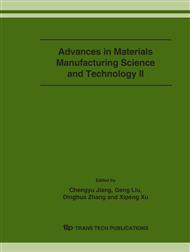p.661
p.665
p.669
p.673
p.677
p.681
p.685
p.689
p.693
Synthesis and Analysis of 4-DOF Parallel Manipulator with Passive Subchain
Abstract:
A new class of 4-DOF Parallel Manipulator (PM) with five supporting subchains is synthesized based on enumeration method. Targeting at 4PUS-1PPU PM, the inverse kinematics and dexterity analysis are developed, and the geometric parameters are determined.
Info:
Periodical:
Pages:
677-680
Citation:
Online since:
December 2006
Keywords:
Price:
Сopyright:
© 2006 Trans Tech Publications Ltd. All Rights Reserved
Share:
Citation:


